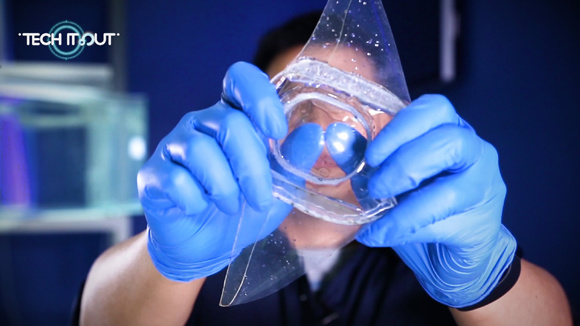
A soft-bodied robot that can swim like a manta ray has been created at China's Zhejiang University. (Photo/CGTN)
A soft-bodied robot that can swim like a manta ray has been created at China's Zhejiang University.
The less than 20 centimeter robots that can swim as fast as six centimeters per second have been developed for information gathering in lakes and oceans.
They can also closely observe marine life and survey fishery resources without disturbing them, said project leader Li Tiefeng.
Robots are increasingly being constructed from soft materials to make them more resilient, but many still need to be powered by rigid circuit boards and motors, something this robotic manta ray does not have.
The secret is its soft belly which flexes when powered by electricity and acts exactly like a muscle.
Li said the new material is called Dielectric Elastomer (DE), a kind of artificial muscle that is deformed by electrical signals.
This material consists of two layers of film as electrodes, sandwiching the middle layer of conductive hydrogel.
When voltage is applied to the electrode, it attracts electrons, making the rest of the hydrogel positively charged.
The gel is then attracted to negatively charged electrons, and the two dielectric films will be compressed to the center and the middle layer will be squeezed.
Using DE underwater was thought to be impossible, because the thick electrical insulation required would have hampered flexibility.
But the team at Zhejiang University came up with a counter-intuitive solution. They took advantage of the water's own conductive properties as the negative electrode for the entire circuit system.
The hydrogel part is positively charged. The gel is then attracted to negatively charged electrons in the water outside the robot, squeezing the fish body in between and causing movement of the fins.
The final result is that the electricity pulses make the fins flap up and down and move the fish forward.
The technology may free designers from the rigid constraints of construction, making new types of wearable devices or soft exoskeletons possible.
For example, knee pads that are applied with this technology could help improve stability among elderly people while gloves using this tech could give users a stronger grip.


















































